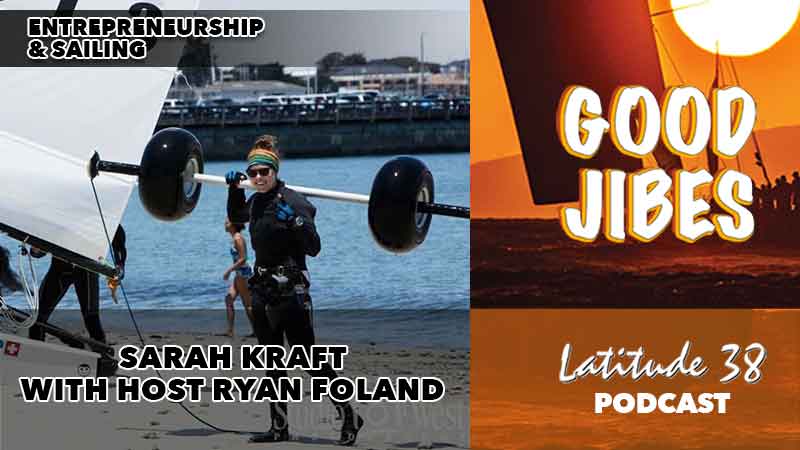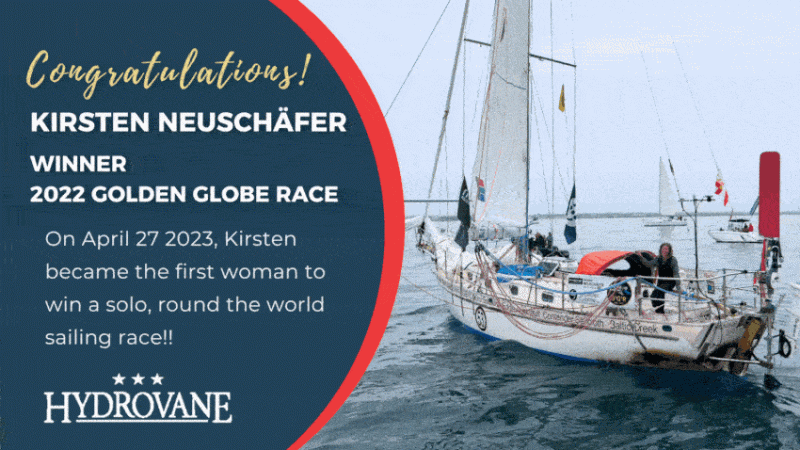
- West Coast Sailing
- Commentary
- Northern California Racing
- General Sailing
- Racing
- Cruising
- Current News
Delta Ditch Run to Delta Doo Dah
The 34th Delta Ditch Run from Point Richmond to Stockton is on this Saturday, June 7. Are you signed up? This iconic Bay Area sailing race attracts dozens of crews. This year’s registrations stand at 95 boats. Not a record, but still, that’s a lot of people and sails to watch on the Bay.
Often starting in what appear as calm conditions, the past events have had their share of excitement. Last year the the Chris White Explorer 44 trimaran Caliente had to retrieve a crew member who had gone overboard while the boat was chasing the F-25c trimaran Soarin in 16-18 knots of wind. The wet crew member was hauled to safety, and Soarin sailed on to finish first, and win the Multihull Division.
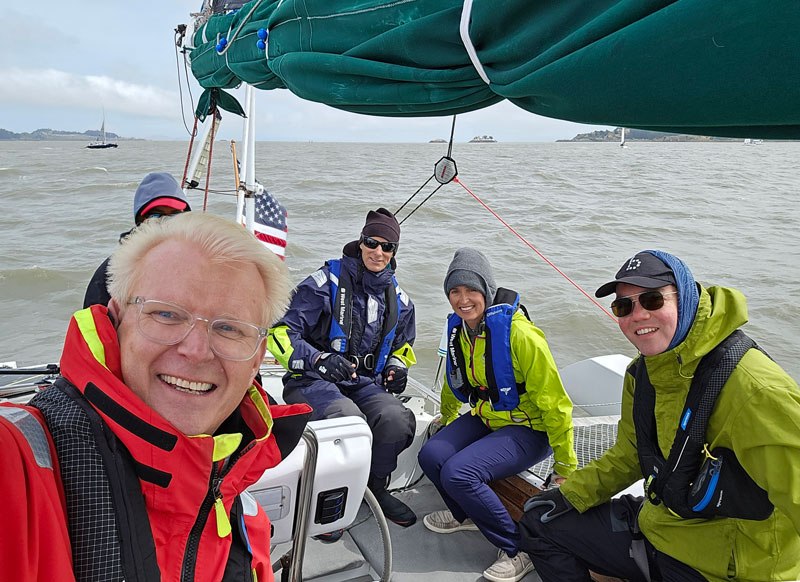
Other dramas on the day included the F-31 trimaran Waterwings running aground twice and having to drop out, and Papillon, an F-27 trimaran, capsizing.
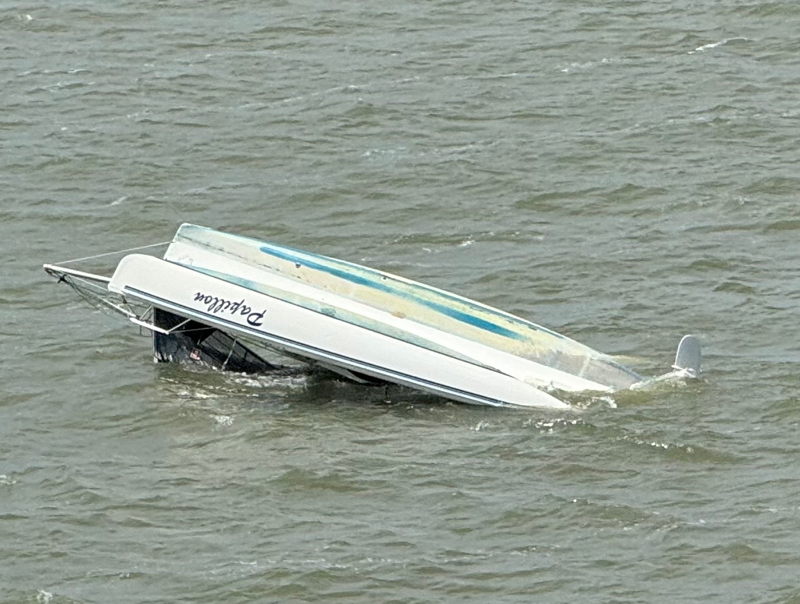
We’ve shared stories of other excitement-filled DDRs in recent years with headlines such as “A Delta Ditch Run Both Fast and Fraught“(2022); and “Delta Ditch Run Dished Out Some of This, Some of That” (2021). But they’re not always that way, and there’s also the lure of the Delta itself to help sailors unwind from any “post-race traumas.”
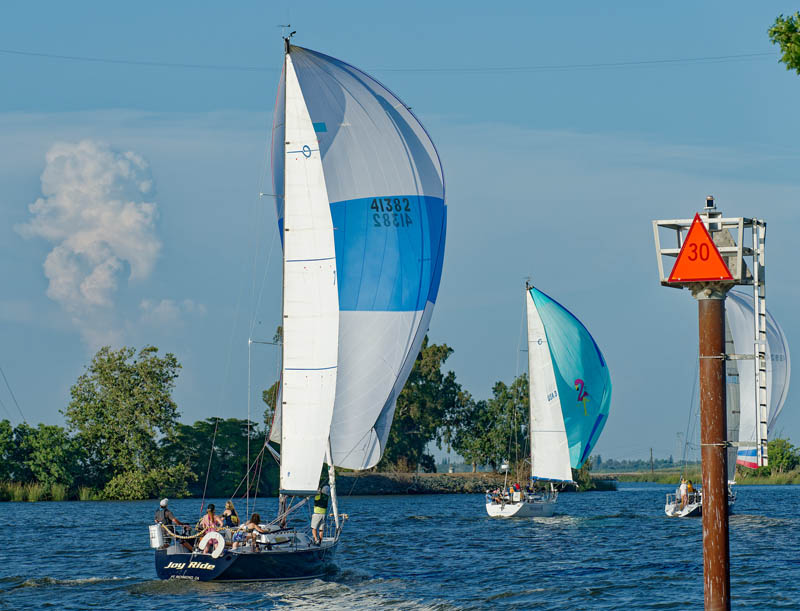
The 65-mile downwind Delta Ditch Run is the first “event” on the Delta Doo Dah calendar, and the Delta Doo Dah is the Do-It-Yourself summertime cruising rally to the California Delta — an informal, DIY affair. The whole point of cruising the Delta is to relax, throw the clock and calendar overboard (figuratively, of course), and let the wind and currents take you. There’s no right or wrong way to do the Doo Dah. That said, there are a few dates and places to keep in mind.
Registrations opened at the end of April, but you can join anytime until August 31. Other DDD calendared events include Summer Sailstice on June 21, which is as loose and casual as it gets. Sign up to join an organized event or cast off when you choose. Owl Harbor is planning a BBQ for everyone who’s cruising the Delta during this summer-long rally, date to be determined.
Sign up here to let us know you’ll be relaxing in the Delta after, and perhaps even before, the Delta Ditch Run. I’m sailing the Delta Doo Dah!
Good Jibes #194: Sarah Kraft on Entrepreneurship and Sailing
This week we chat with Sarah Kraft about juggling sailing with running a business. Sarah is a Hobie 16 world champion and WASZP sailor who’s the co-founder and CEO of Koil, the AI Reddit for Teens.
Tune in as Sarah talks with host Ryan Foland about the one-of-a-kind experience you get foiling a WASZP, the parallels between entrepreneurship and sailing, how to navigate imposter syndrome on and off the water, why we need more women mentors in the sailing and entrepreneurship worlds, and the reality of pro sailing.
Here’s a sample of what you’ll hear in this episode:
- Beware the WASZP!
- How does Sarah approach learning off-boat?
- Finding mentors who are good models of who you want to become
- A slight behind-the-scenes of the politics of pro sailing
- What kind of sailboat Sarah’s business would be
Listen to the episode on Apple Podcasts, Spotify, and your other favorite podcast spots — follow and leave a 5-star review if you’re feeling the Good Jibes!
Learn more about Sarah at Koil.Life, on Instagram @Captain_Krafty, and on LinkedIn, and Ryan at Ryan.Online
Steering the Dream With Hydrovane
Hydrovane is your best crew member: an independent self-steering windvane and emergency rudder/steering system … ready to go!
A Tip on Researching Documented Vessels
On Monday we shared a story about the Formosa 51 Fair Seas. While the boat is now enjoying life as a centerpiece bar in The Kraken, a restaurant in Tonga, its owner is interested in learning more about its history. Reader and regular Latitude contributor John “Woody” Skoriak sent us his tip on how to find the information.
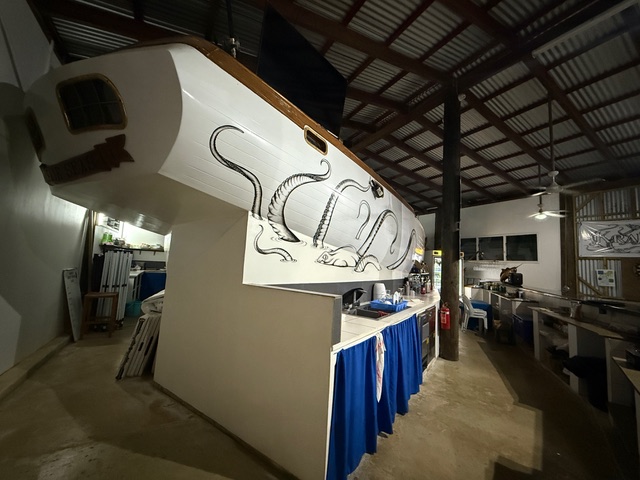
“When all else fails, one of the most effective ways to gather information is through a US Coast Guard vessel documentation search.
“As you know, every documented vessel has a unique documentation number (referred to as the ‘Official Number’ by the Coast Guard). This number is required to be permanently affixed inside the hull — usually chiseled, carved, or mounted onto a structural member of the boat. Common locations include a bulkhead, crossbeam, engine room, or sometimes even on the risers of a wooden stairway — as we found on one of our recent boats.”
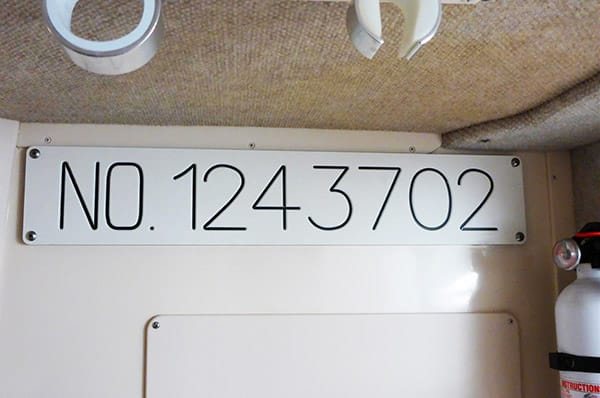
“If the owner or someone inspecting the boat can locate that number, it becomes relatively easy to run it through the Coast Guard database to retrieve key vessel details such as year built, length, beam, and depth.
“Once you have the documentation number, you can request an Abstract of Title from the US Coast Guard’s National Vessel Documentation Center. It’s a straightforward process that can be done online and costs only $25.
“The Abstract won’t reveal the vessel’s current location or cruising history, but it will list all past and present owners, along with any recorded mortgages (listed as ‘First Preferred Mortgages’ in Coast Guard terms). It functions much like a deed for a house, providing a verified chain of ownership and any encumbrances.
“In some cases, if a vessel has a very unusual or distinctive name, you can search by name and identify it by process of elimination using the build year and dimensions. However, in the case of Fair Seas — the only one I could find by a process of elimination was #056774 but records are out of service [documentation has expired].
“So, in short: If the reader or owner can locate that number somewhere in the hull structure, we might be able to solve part of the mystery. I’d be happy to help and even get an Abstract of Title. Like most procedures related to Coast Guard documentation, by the time I explain it to someone, I can do it myself much more quickly and easily …”
Is this a challenge?
We’ll be forwarding Woody’s suggestion to Jim Yares of the Catana 472 Roam, who, together with his wife, discovered Fair Seas when visiting Tonga. In the meantime, can anyone tell us which boat the number in the image belongs to?

She’s a Captain
Yes — it’s true, I received my US Coast Guard 50-ton master’s inland license just a few weeks ago, making me a newly minted captain. Hold the applause, thanks. I’m not saying you have to call me Cap, but I am saying that you could, if you wanted to. To any landlubbers reading this, you might be tempted to put me up on a pedestal for my many accomplishments: “She’s only 30? She only started sailing a few years ago? She’s a professional writer, too, with a dozen published articles in Latitude 38? My, however does she do it all?” Well, I did “it” because I ran out of other options.
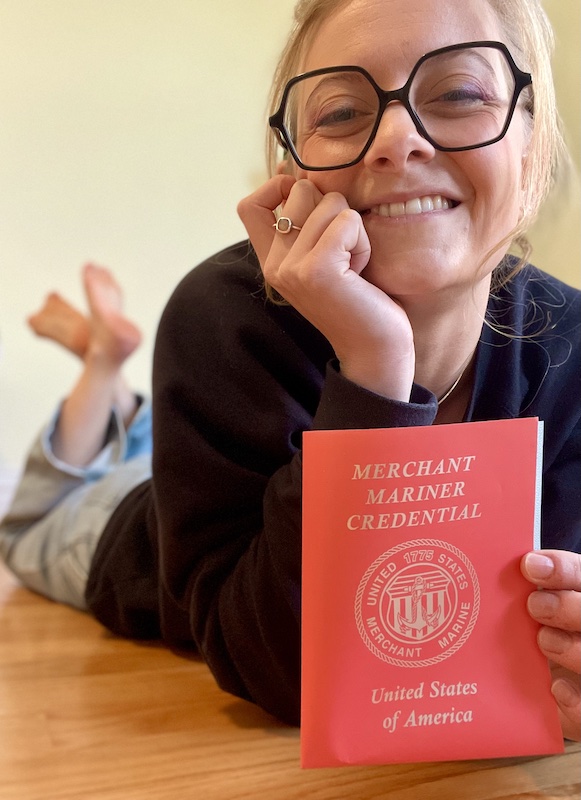
I graduated into the COVID pandemic as a dreamy French major, which didn’t exactly yield the career jobs I had hoped to land. And so, like many others before me, I gave up and took to the sea. Or, I took to the Bay. Because, did you notice? My license is designated “inland waters,” which is pretty much the Coast Guard’s way of saying, “Sure, you can drive the boat … just not too far.”
Even so, earning this license took five years of adventures: 1,000 documented hours of sea service time on sailboats, 40 hours of class time, 10 hours of charting homework, eight hours of exams, untold hours of fighting imposter syndrome, and countless times I’ve received help along the way.
None of this would have happened if I had not joined Cal Sailing Club in 2018 as a curious transfer student at UC Berkeley. Wildly unprepared and far too nerdy for the marina, I hopped onto a dinghy, barefoot in yoga pants and a T-shirt, and immediately capsized during a lesson. Twenty-knot gusts in an ebb-current chop meant 40 minutes in the water before getting rescued. I had hypothermia — and a nasty case of the sailing bug. I had to get back out there and beat this thing called a dinghy.
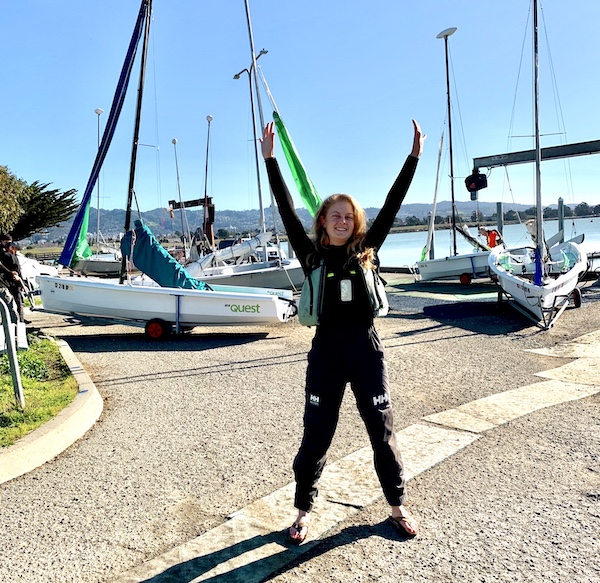
After that, it is possible I sailed more than I studied, and I studied a lot! (I was a vitamin D-deficient nerd who read a lot of fiction to escape and loved Berkeley academics a little too much.) But I also loved the sailing community. I loved getting stronger. And I loved being on the water. It was as fun as playing outside had been as a kid — the sun and wind and salt and aching muscles and bruises. (The RS Quest gives you the worst kind of bruises, the kind that make the pool lifeguard ask if you’re safe at home.) I had found a new, unlikely escape.
After a year abroad in France, a global pandemic closing airports behind me, and a crash landing back in my hometown, I found myself on the water again. I landed a gig as a deckhand for Captain Kirk’s San Francisco Sailing. That’s where things really took off.

